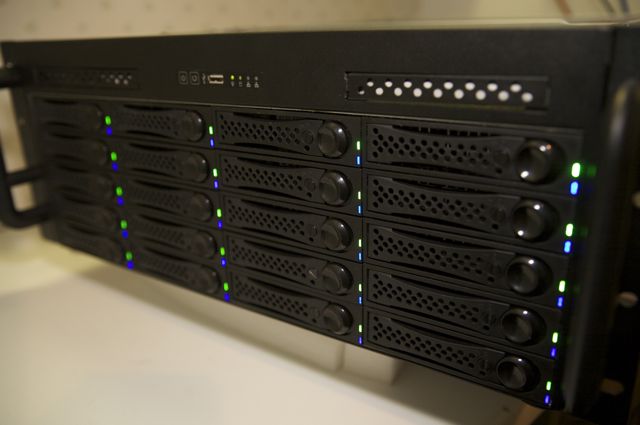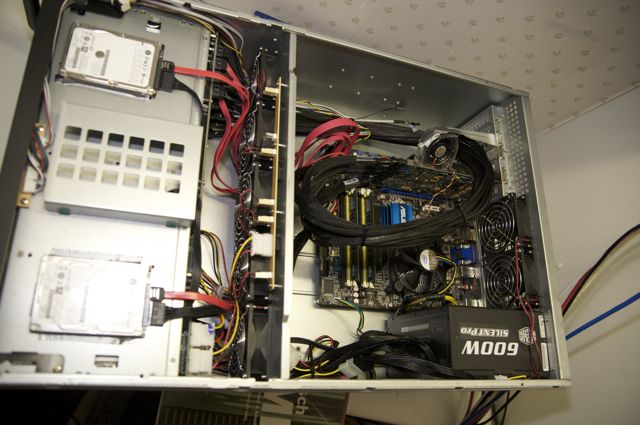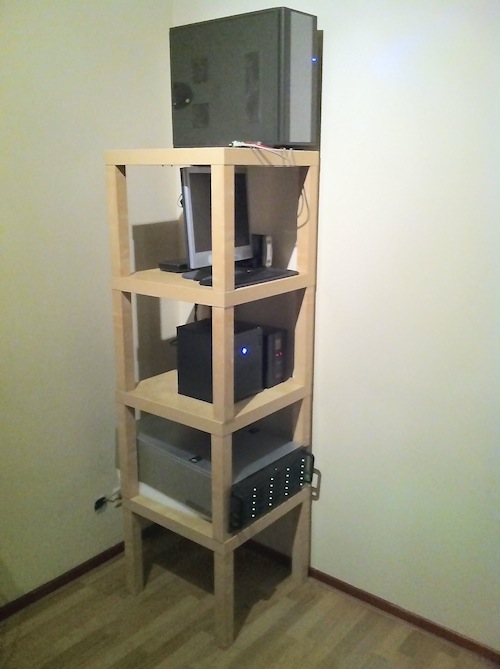The Mac Mini is just a gorgeous device. It is beautiful, small, silent,
powerfull yet energy efficient. When idle, it uses around 20 watts. I'm using
one of the first Intel-based Minis with an Intel Core Duo chip, running at 1.6
Ghz.
I want to use this mini as an expensive router and download host. I could have
used something embedded, such as one of those router boxes that costs about 70
euros, but no, I want to do some more with my router, such as downloading,
etc. It is the only device in my house that is allowed to run 24/7 so it has
to be a bit more powerful if I want more than just routing. I know that this
mini was like 600 euros or something back in the days, and that is quite some
money to spend on something that is now only a router. However, when I was
still running Mac OS X on it, I didn't do much more with it than I will now,
it will actually do more.
I am assuming that you want to run Linux exclusively on the Mac and that Mac
OS X will be wiped off.
To get this puppy running Debian Linux (Lenny), you need to first boot the Mac
with the (Snow) Leopard OS X boot CD and startup the diskutilily.
You need to create at least two partitions: one for the root file system and
one for swap. The most important step is to select 'options' under the
partition layout screen, and select Master Boot Record partitioning instead of
the other 2 options. Do NOT use GUID or Apple Partition Map.

Now, boot your regular Debian Linux boot CD, I use the regular network
installation CD. When you get to the partitioning screen, do NOT auto-
partition the hard disk. Just reconfigure the existing partitions you just
made using Diskutility. So the large partition will be configured as "/" and
made bootable. The small partition must be configured as swap.
After the installation finishes, just install GRUB in the MBR and reboot. If
all went alright, you will see a non-blinking folder on a gray background for
a couple of seconds, after which Linux will boot. If you get a blinking gray
folder with a question mark, something went wrong.
It seems that if configured properly, after the EFI boot mechanism fails to
find a system folder on some Mac partition, the legacy BIOS emulation seems to
kick in, and star to search for something to boot.
The Mini has only one network card, so another one is necessary to run it as a
router. I bought some no brand USB2 to 100 MBIT NIC (Bus 005 Device 003: ID
9710:7830 MosChip Semiconductor MCS7830 Ethernet) which seems to run smoothly.
card with a dual gigabit card.
I guess you will need to mod the Mini but it will allow true gigabit speeds on
all interfaces.
PCI_Express_Dual_Gigabit_LAN_Module/product_info.html
 This output is tailored to the exact disk lay-out of my storage
server. However, it is also usable for other servers. You have to edit the
lay-out depending on the system.
This output is tailored to the exact disk lay-out of my storage
server. However, it is also usable for other servers. You have to edit the
lay-out depending on the system.




